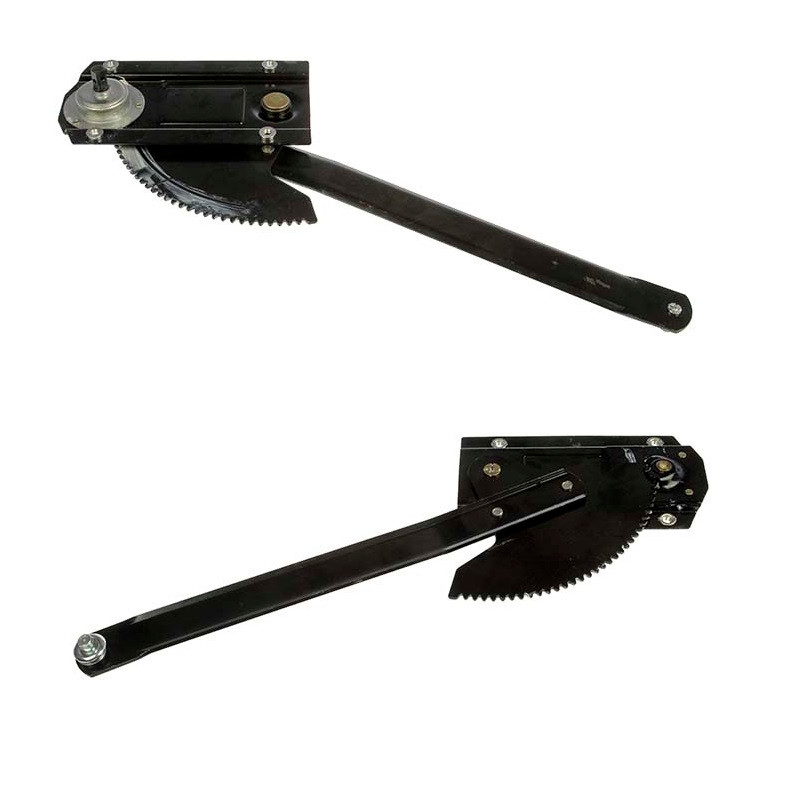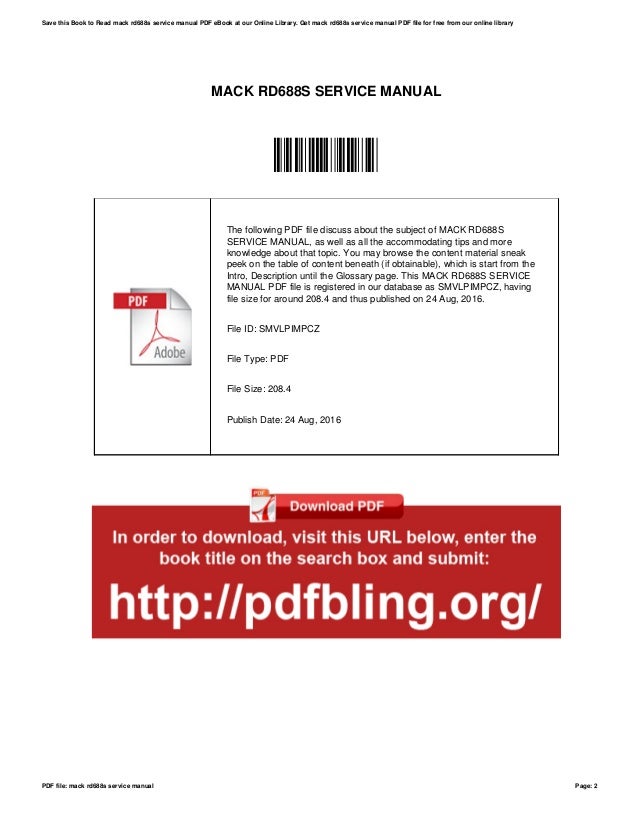1991 Mack Model Rd688s Service Manual
Mack R Model Overview Manufacturer Production Worldwide 1966-2005 Assembly Body and chassis Truck (bonneted cab) 4x2, 4x4, 6x4, 6x6 Related Mack U Series Mack DM Series Powertrain Turbocharged diesel 200–440 hp (150–330 kW) Mack / Fuller (manual) Allison (automatic) Chronology Predecessor Successor The Mack R series was a line of heavy-duty trucks introduced in the early 1960s. It replaced the very successful models. R Model production ran for 40 years until the RD model was discontinued in 2002 and the RB and DM models were discontinued in 2005. The first R models introduced were powered by Mack diesel and gasoline engines. In 1973 the R cab was given a makeover to include a deeper rear wall for more room and a new dashboard design. Contents.
Model designations. R - Standard model. RB - Set back front axle (except in New Zealand - see ). RD - Heavy Duty R. RM - 4x4 Municipal/maintenance chassis. RMM - 6x6 Municipal/maintenance chassis.

RS - Western R series, S stands for steel frame. RL - Western R series, L stands for Aluminum frame. RW - Western series, replaced by the. U - Short hood offset cab. DM - Heavy duty U.

DMM - All wheel drive DM. Chassis numbers (GVW Rating):. 4xx -. 6xx -. 7xx -. 8xx - Note: the xx is the place holder for the engine code. Suffix letters:.
T - Tractor. S - Six wheel chassis. L - Light weight components. X - Extreme duty R series.
1991 Mack Model Rd688s Service Manual Pdf
R (left) and RD Mixers Mack started to produce the R and RW in 1966 for highway use, the RD and all wheel drive RM were for construction and municipal use. Isuzu trooper 88 repair manual. The lightweight RL model followed in 1967, the RW Superliner with a large, rectangular hood and grill in 1977, and the setback front axle RB in the 1990s. In the 1990s the R and RW were discontinued and the RB was introduced, mostly for severe-duty applications. The hood was modified slightly for the model RB.
2004 was the last year for the RD, and 2006 for the RB. U and DM series. DM Mixer on subway tracks (note offset cab) The “U” and “DM” series were modifications of the “R” series. A short hood, and the shorter “bumper to back of cab” distance, made them useful in straight trucks and in semi-tractors used in congested cities, but caused the engine to intrude into the passenger compartment. To compensate the cab was offset to the left: the engine “doghouse” intruded into the passenger footwell but left the driver’s position intact. The U was basically a short R, while the DM was an extra heavy duty version of the U often used in 6X4 construction trucks. Like the RMM, the DMM was all wheel drive, but had not only a short hood/offset cab, but also a set back front axle, requiring a model specific fiberglass hood/fender arrangement.
Engine codes In 1966 they were: EN - Engine (gasoline), END - Engine Diesel, and ENDT - Engine Diesel Turbocharged, with the three number cu in displacement next. By 1988 the numbering system had changed slightly. The prefix “D' and 'T”, no longer needed as all engines were diesel and turbocharged, were discarded, as was the 'N'.
The prefix “M” was for “Maxidyne” wide power range models, C was for California certified engines. A “6” was for the 672 cu in (11.0 L) I6, “9” was for the 998 cu in (16.4 L) V8, in 1987 the '7” 728 cu in (11.9 L) I6 was introduced. The next three digits were the horsepower rating of the engine, and an “L” suffix indicated an 'Econodyne' low speed model.
An example of the difference would be the ENDT673 and later E6-200 being similar engines. Gallery.